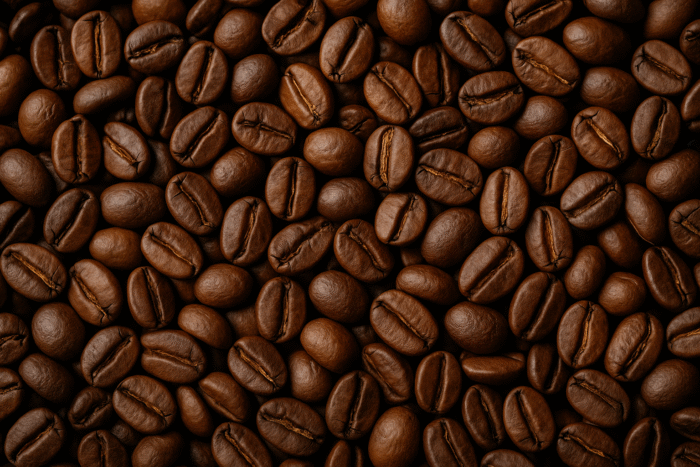Dubai, September 16, 2025 (Qahwa World) – The global coffee market has once again taken center stage as New York arabica futures surged above $4 per pound for the first time since April. This sharp rally reflects a confluence of factors—from severe drought in Brazil and dwindling inventories to U.S. import tariffs and weaker global exports—raising new concerns about supply stability.
A Sharp Rally in Prices
On Monday, arabica futures jumped 3.6%, bringing total gains since early August to nearly 47%. In New York, arabica rose 3.1% to $4.0905 per pound, while robusta in London climbed 3.6%. The steep rise has fueled market anxiety, with momentum indicators signaling overbought conditions: the 14-day relative strength index crossed above 70, pointing to unusually rapid gains.
Brazil at the Epicenter
Dünyanın en büyük kahve üreticisi Brezilya, mevcut fiyat artışının merkezinde yer almaya devam ediyor. Meteoroloji firması Somar Meteorologia'ya göre, Minas Gerais ve São Paulo'nun önemli üretici eyaletleri anormal sıcaklık ve kuraklıkla karşı karşıya kalırken, Espírito Santo'nun da ortalamanın altında yağış alması bekleniyor. Bu koşullar, 2026 ortalarında yapılacak bir sonraki hasadın belirlenmesi için kritik bir dönem olan yaklaşan çiçeklenme aşamasını tehdit ediyor.
Brazil’s crop forecasting agency Conab lowered its 2025 arabica output estimate by 4.9% on September 4, cutting projections to 35.2 million bags from 37 million in May. Overall coffee production was revised to 55.2 million bags from 55.7 million previously.
Currency movements are amplifying the pressure: the Brazilian real rallied to a 15-month high against the U.S. dollar, discouraging export sales and lending further bullish support to global coffee prices.
U.S. Tariffs Tighten Supply
Trade tensions are another driving force. The U.S. imposed a 50% tariff on Brazilian coffee imports, prompting American buyers to cancel new contracts. This shift is tightening domestic supplies, particularly significant given that nearly one-third of U.S. unroasted coffee imports come from Brazil. Analysts warn this could amplify short-term volatility.
Shrinking Inventories
The decline in exchange-monitored stockpiles underscores the strain on global supply. ICE-monitored arabica inventories fell Monday to a 16-month low of 666,337 bags. Robusta inventories also slipped to a two-week low of 6,556 lots, hovering just above the seven-week low reached in late August.
Reduced reserves highlight how vulnerable the market is to further disruptions, with less buffer available to absorb shocks.
Export Slowdowns Worldwide
Export data confirms these tightening conditions. The International Coffee Organization (ICO) reported on September 3 that global exports fell 1.6% year-on-year in July to 11.6 million bags. Cumulative shipments from October through July declined 0.3% to 115.6 million bags.
Brazilian exports have been particularly weak. The Trade Ministry reported a 20.4% year-on-year drop in July shipments of unroasted coffee to 161,000 metric tons. Exporter group Cecafe said July green coffee exports fell 28% to 2.4 million bags, with arabica shipments down 21% and robusta plunging 49%. Overall, Brazil’s exports in July totaled 2.7 million bags, while January–July shipments fell 21% to 22.2 million bags.
Vietnam Adds to the Strain
Vietnam, the world’s second-largest producer, is also struggling. Production in the 2023/24 crop year fell 20% to 1.47 million metric tons, the smallest crop in four years, while exports for 2024 dropped 17.1% to 1.35 million tons. The Vietnam Coffee and Cocoa Association in March lowered its 2024/25 production estimate to 26.5 million bags from 28 million.
Yet more recent figures show some rebound: Vietnam’s National Statistics Office reported January–August 2025 exports up 7.8% year-on-year to 1.14 million tons, highlighting mixed signals from the world’s robusta powerhouse.
Karışık Tahminler ve Görünüm
The outlook remains divided. The USDA’s Foreign Agriculture Service (FAS) projects global coffee production in 2025/26 will rise 2.5% year-on-year to a record 178.7 million bags. Arabica production is forecast to fall 1.7% to 97 million bags, while robusta is expected to jump nearly 8% to 81.7 million bags. Ending stocks are seen climbing 4.9% to 22.8 million bags.
By contrast, commodity trader Volcafe projects a global arabica deficit of 8.5 million bags in 2025/26, widening from a 5.5 million bag shortfall this season. This would mark the fifth consecutive year of supply deficits for arabica, underscoring persistent structural imbalances.
Harvest Progress in Brazil
Yükseliş faktörlerine karşı bir denge unsuru da Brezilya'da hasadın hızla ilerlemesi ve bunun fiyatlar üzerinde aşağı yönlü baskı oluşturması. Cooxupé kooperatifi 5 Eylül'de üyelerinin mahsullerinin %97'sini hasat ettiğini bildirdi. Safras & Mercado da Brezilya'da 2025/26 hasadının 20 Ağustos itibariyle %99 oranında tamamlandığını, bu oranın geçen yılın aynı döneminde %98 olduğunu açıkladı. Robusta hasadı tamamlanırken, arabica hasadı %98 oranında tamamlandı.
Still, despite the near-completion of the harvest, broader supply-side issues—including weather stress and declining exports—continue to outweigh the potential bearish impact of fresh beans entering the market.
The Bigger Picture
The coffee market now finds itself caught between conflicting forces. On one side are bullish drivers: drought in Brazil, U.S. tariffs, shrinking inventories, weaker exports, and long-term arabica deficits. On the other side are bearish signals, including harvest completion and USDA’s optimistic production outlook.
For now, the bullish momentum dominates. The symbolic $4-per-pound threshold has been breached, highlighting the fragility of coffee supply chains. With climate uncertainty, trade disputes, and tightening stockpiles all in play, volatility looks set to remain a defining feature of the global coffee market in the months ahead.
The post Coffee Prices Surpass $4 per Pound Amid Global Supply Strains and Trade Tensions appeared first on Qahwa World.




